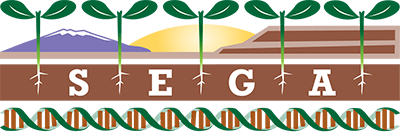You are here
Genetic variation in NIN1 and C/VIF1 genes is significantly associated with Populus angustifolia resistance to a galling herbivore, Pemphigus betae.
Publication Type:
Journal ArticleSource:
Journal of insect physiology, Volume 84, p.50 - 59 (2016)ISBN:
0022-1910URL:
http://www.ncbi.nlm.nih.gov/sites/entrez?Db=pubmed&DbFrom=pubmed&Cmd=Link&LinkName=pubmed_pubmed&LinkReadableName=Related%20Articles&IdsFromResult=26518288&ordinalpos=3&itool=EntrezSystem2.PEntrez.Pubmed.Pubmed_ResultsPanel.Pubmed_RVDocSumhttp://www.ncbi.Keywords:
Animals, Aphids, beta-Fructofuranosidase, Enzyme Inhibitors, Genes, Plant, Genetic Variation, Haplotypes, Herbivory, Plant Immunity, Plant Proteins, Plant Tumors, Polymorphism, Single Nucleotide, PopulusAbstract:
<p>The identification of genes associated with ecologically important traits provides information on the potential genetic mechanisms underlying the responses of an organism to its natural environment. In this study, we investigated the genetic basis of host plant resistance to the gall-inducing aphid, Pemphigus betae, in a natural population of 154 narrowleaf cottonwoods (Populus angustifolia). We surveyed genetic variation in two genes putatively involved in sink-source relations and a phenology gene that co-located in a previously identified quantitative trait locus for resistance to galling. Using a candidate gene approach, three major findings emerged. First, natural variation in tree resistance to galling was repeatable. Sampling of the same tree genotypes 20 years after the initial survey in 1986 show that 80% of the variation in resistance was due to genetic differences among individuals. Second, we identified significant associations at the single nucleotide polymorphism and haplotype levels between the plant neutral invertase gene NIN1 and tree resistance. Invertases are a class of sucrose hydrolyzing enzymes and play an important role in plant responses to biotic stress, including the establishment of nutrient sinks. These associations with NIN1 were driven by a single nucleotide polymorphism (NIN1_664) located in the second intron of the gene and in an orthologous sequence to two known regulatory elements. Third, haplotypes from an inhibitor of invertase (C/VIF1) were significantly associated with tree resistance. The identification of genetic variation in these two genes provides a starting point to understand the possible genetic mechanisms that contribute to tree resistance to gall formation. We also build on previous work demonstrating that genetic differences in sink-source relationships of the host influence the ability of P. betae to manipulate the flow of nutrients and induce a nutrient sink.</p>
- Log in to post comments
- Google Scholar
- RTF
- EndNote XML
- RIS
Theme by Danetsoft and Danang Probo Sayekti inspired by Maksimer
